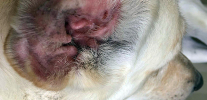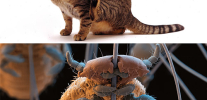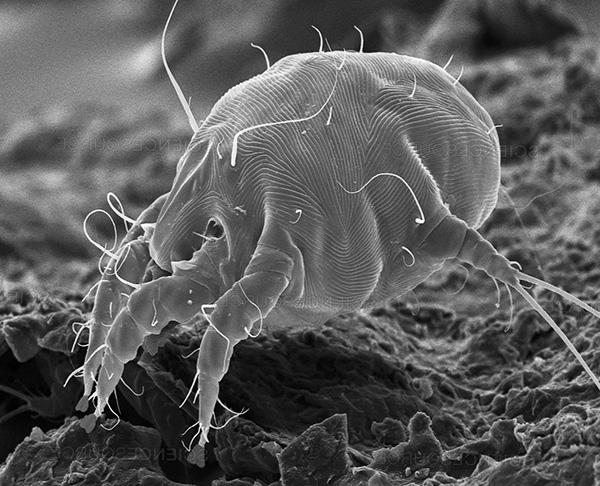
Ear mites are dangerous parasites of cats, dogs, rabbits, pigs and other animals (including wild ones) that cause them a disease called ear scabies (aka otodektoz). This disease spreads very quickly, and ranks second in frequency among domestic animals (primacy in prevalence among external parasites belongs to fleas).
Parasitic ear mites on the surface of the skin in the ear canal of the host. In humans, these arthropods, as permanent parasites, are rare: only a few cases of human infection with otodecosis are described in detail (more on this later).
However, rabbits, cats and dogs are highly susceptible to the negative effects of these ticks. Young animals grow poorly, feed and gain weight, are restless, comb their ears before the formation of ulcers.Do not sleep, constantly keep your head tilted. With further development of the disease, hearing is deteriorating, acute otitis appear.

If you start the disease, severe inflammations develop that can lead to meningitis and death of the animal. The treatment is complicated by the fact that a reproduction center of accompanying microorganisms forms at the site of mite localization, which further weakens the pet's organism.
Let's see how the ear tick looks and breeds, where it lives and how the parasite infects domestic animals, and also see if it is dangerous for humans and what to do if the animal has already become infected and suffers from otodecosis ...
Features of life and the appearance of parasites
Several species of acarimorphic ticks from the Psoroptidae family cause ear ear scabies. These parasites are very selective in choosing a host, so each species of tick can live only on a specific host, and when it hits the “not your own” species, it dies.
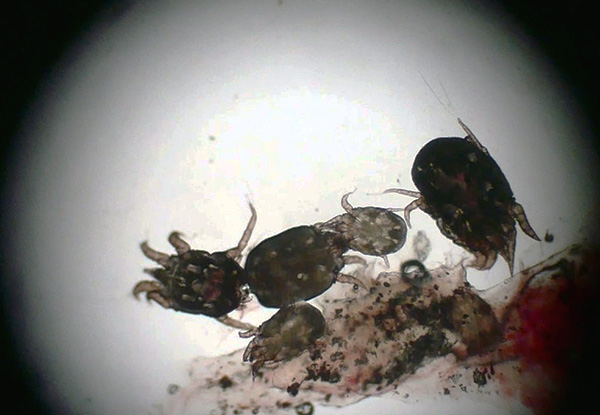
On a note
On predatory animals, in particular dogs and cats, the tick Otodectes cynotis parasites, therefore the disease is called otodectes (from the generic name of the parasite).But in rabbits and sheep in the ears there lives another arthropod belonging to the genus Psoroptes, so the ear scabies of these mammals is called psoroptosis. The symptoms of the disease caused by these parasites are very similar, but there are some nuances. For example, psoroptosis is never found in humans, whereas human cases of otodectesis are reported.
Ear mites are very small parasites that are quite difficult to see with the naked eye. The size of the females is only 0.5 mm, while the males are smaller by half. The body of the ear mites has a wide oval shape, is slightly colored, sometimes red, yellow or light brown.
The photo below shows what an adult ear mite looks like:
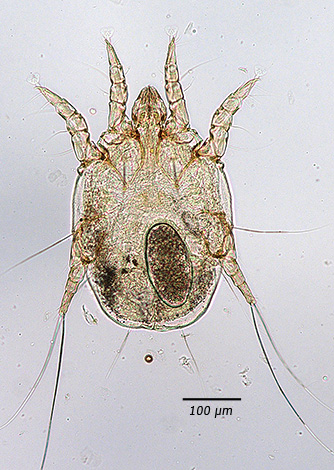
Males are distinguished from females by the presence of two scutes on the ventral side. 4 pairs of powerful thick legs that are well linked with the host skin epidermis are moving away from the body. In otodex 4 pairs of legs are reduced, so they are easily determined by laboratory diagnosis of the disease.
The oral apparatus is sucking type. Powerful chelicera cut the delicate thin skin of the ear canal, after which the parasite begins to feed on lymph, blood from the capillaries, and a little later - from the source of inflammation.
The life cycle of the ear parasites follows a common scenario for all ticks and consists of five stages:
- Eggs;
- Larvae;
- Two nymphs (proto-and teleonymphs);
- Adult (imago).
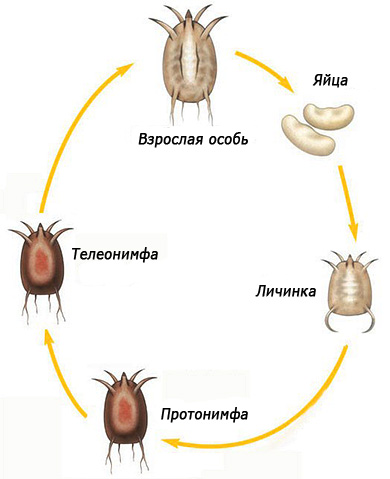
Both mature specimens and larvae and nymphs actively feed, and when they hit other animals, they can infect them. All stages of the mite's life cycle are invasive - from the egg to the larva, that is, infection occurs regardless of whether the eggs fall on the pet's coat or an adult.
The development of ear mites occurs very quickly - these parasites need no more than 10 days to complete a full cycle. In the external environment, arthropods survive up to 20 days, after which, if no host is found, they die. At the same time, no single stage of the life cycle passes outside the host: unlike Ixodes, the ear mites are permanent parasites that must always be in the host’s ears (less commonly on the body).
In the photo - Otodectes Cynotis mites in the cat's auditory canal:

On a note
Fertilization in ear mites occurs in two stages. First, a mature male finds a female's nymph and injects spermatofor (a capsule with spermatozoa) into its genital ducts.The nymph molts into the mature female, and only after that the moment of fertilization takes place.
Females are very fertile, and under favorable conditions, they lay hundreds of eggs, which are located both in the ears and on them. At high concentrations, eggs are scattered throughout the body of the animal, along the litter and apartment. After a short period of time, all surrounding objects become potential sources of infection, therefore they are dangerous not only for other animals living in the house, but also for humans.
Ear mites in humans
Most specialized literature sources state that ear mites do not parasitize people, even if their pets are carriers of these parasites. In most cases, this is true - these parasites do not pose a serious danger to humans.
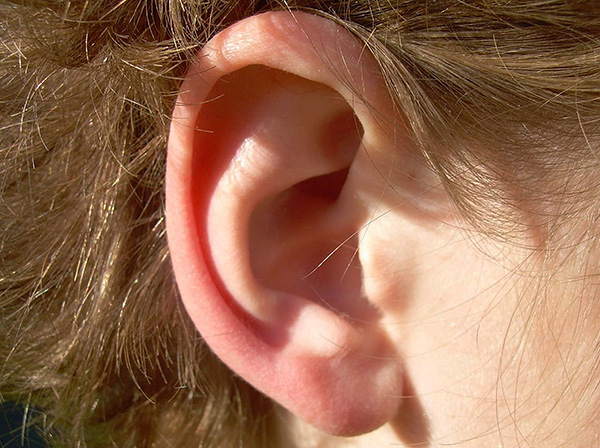
However, there are known cases of human ear ticks infection from pets. One of the most famous cases is the disease of a woman from Belgium. Sources say that this woman lived in a small town and was a farmer’s wife, so she constantly contacted various pets.
Initially, the victim went to the doctor with complaints of acute otitis media. After some time, adult individuals and larvae of the mite Otodectes cynotis were removed from her ear.
It is interesting
Another case is fixed in California. A certain lady went to the hospital with complaints of itching in the chest, arms and legs, which appeared after her purchase of a Cocker Spaniel. It turned out that the dog was infected, and the otecting ticks from its ear canals crawled onto the woman, adapting to parasitism in other parts of the body.
However, such cases are, rather, the exception to the rule, rather than the norm: the causes of ear ticks in humans are not completely clear. Due to the fact that these parasites are very picky in choosing a host and need certain microclimatic conditions, as well as the constant chemical composition of the food consumed, when they hit a different species in 99.9% of cases, mites are killed.
On a note
There is another important point that is worth considering: in the process of vital activity, mites secrete active chemicals that are strong allergens. They accumulate in large quantities in the auricle of the host, and the animal, while scratching and peeling, smears them all over its body.When after that a person takes his pet in his hands or strokes it, these substances get on the skin and can cause allergic itching and irritation.
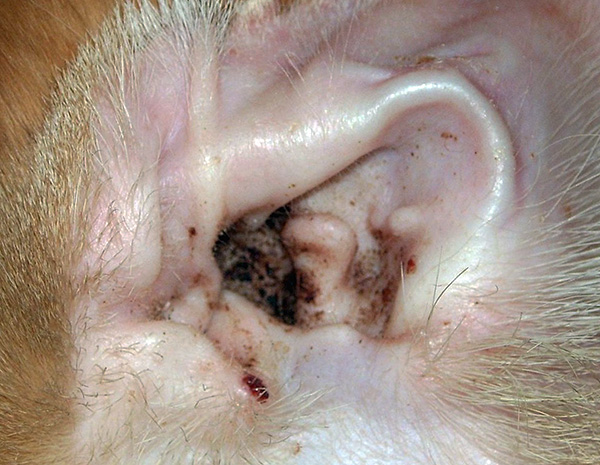
In addition to the "classic" ear mites, in a human ear can also parasitize a person:
- Ticks;
- Argas mites;
- Ticks of the genus Demodex, causing demodicosis.
Representatives of the first two groups are external parasites and feed on blood, sucking on the surface of the body in any part of it, including crawling into the auricle. However, their parasitism is short-lived - as soon as ticks are fed, they leave the host and enter the external environment, where their further development takes place.
Demodecosis is a disease of the skin in general. Ticks develop in the layers of the skin and skin glands, which can cause red acne on the face and body. The same thing happens with the skin of the auricle.
Signs of infection with these mites are significantly different from infection with an ear mite. There is redness and pain inside the ear, however, there is no large amount of sulfur and lymph, as well as the appearance of scabs in the ear canal.
Returning to the ear ticks, it is worth noting that, despite their low degree of danger to humans, animals can suffer from otodecosis. Let's see how exactly pets get infected ...
How does the infection occur?
The most dangerous source of infection is stray cats and dogs. After contact with them, the eggs, larvae and imago of the parasite remain on the human skin and animal hair. Next, the arachnids enter the external auditory canal, where they begin to actively feed and reproduce.

Infection can also occur through various objects, such as furniture in an apartment with a sick animal, care products: combs, various rugs, toys, food containers.
The most frequently sick animals in places of their mass content, characterized by poor sanitary conditions. Especially quickly the tick is transmitted in rooms with a humid and warm microclimate. When combing the affected areas with animals, ticks along with detached pieces of the epidermis fly over considerable distances and settle on all surrounding objects, therefore, in addition to treating a sick animal, special treatment of a private house or apartment is also necessary.

Without food sources, ear mites live more than two weeks in the environment.
In view of the above, the following main ways of infection by otodectes can be distinguished:
- Pets are infected from wild or stray animals while walking, sniffing and surveying adjacent territories;
- Through care items when several animals are cared for with the same tools;
- Through cages, transportation devices, toys, collars and leashes;
- The parasite can be transmitted from a person who is a carrier (for example, you stroked a stray dog, and then, without washing your hands, you started playing with your pet);
- A person can become infected only after contact with a sick animal, but in most cases people can act only as carriers of the ear mite, and they do not suffer from otodectes.
Interesting facts about ear mites
Otodektoz is widespread in all countries of Europe. Much of the wild fur animals in America and Canada suffer from this disease. In Russia, otodectosis is most common in the Leningrad, Voronezh and Kaliningrad regions, as well as in Karelia.
Cats and dogs are equally affected by the parasite, and animals that have reached 6 months of age are the most frequently affected (but also younger age groups are also susceptible to infection).
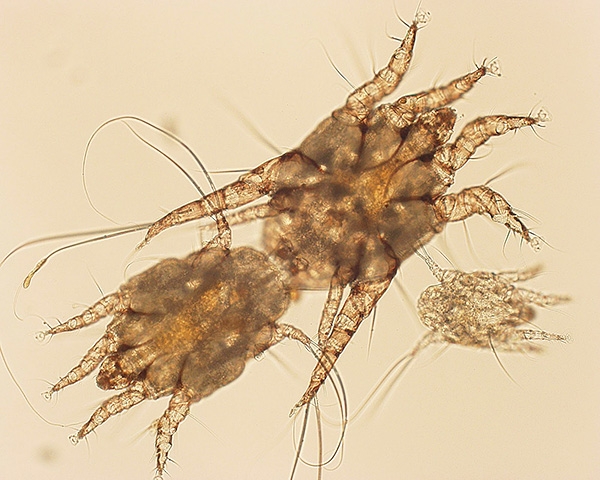
Particularly sensitive animals, prone to the development of otitis. Some experts believe that the ear mites often parasitize long-eared dogs, and the risk group includes:
- French Bulldogs;
- Cocker Spaniels;
- Poodles;
- German Shepherd Dog
As for cats, both pedigreed and purebred animals are almost equally affected. Although, according to some reports, infection with ear mites is most difficult for Maine Coon, Persian and Siamese cats.
Rabbits, pigs, guinea pigs, ferrets are also often affected by otodectes.
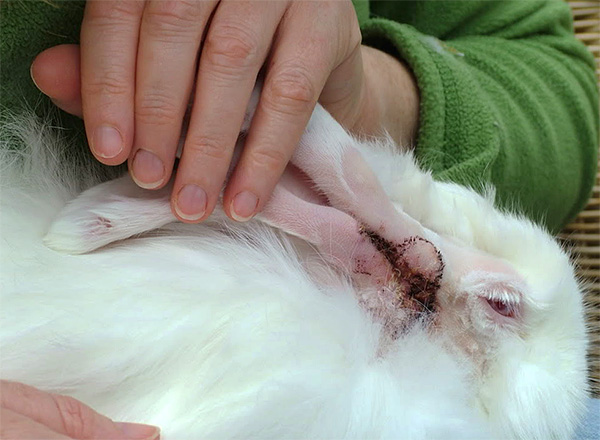
The disease does not have a seasonal nature: the infection can occur at any time of the year, since the parasites live in a protected environment (in the ear canal), where a microclimate favorable for reproduction is created for them. However, the peak of activity is still observed in the winter - in January and February - while the dry summer months are characterized by a slight decrease in the number of diseases.
Symptoms of otodecosis
Otodectesis is a chronic parasitic disease that can last for a considerable period of time and ultimately lead to the death of the animal.
In sick animals, there is a strong edema of the auditory passages - discharge from damaged skin, mixing with earwax, particles of the epidermis and ticks, form a dark brown mass that forms a stopper in the ear canal.
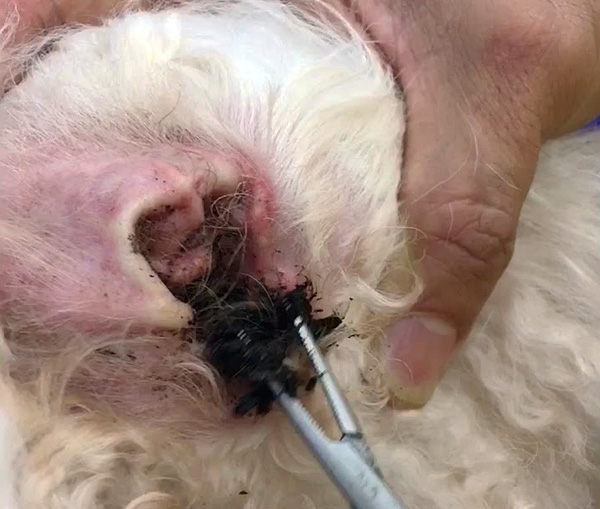
In the chronic course of the disease, the accompanying microflora settles at the site of parasitism of the tick, which strengthens suppuration - the process spreads to the middle and inner ear, after which the meninges are affected, and the animal dies.
As noted above, ear mites feed on lymph, blood and products of inflammatory reactions in the tissues. During such a parasitic process, the skin receptors are constantly irritated, which is why the animal has severe itching in the ears, as well as pain.
On a note
On the background of the inflammatory process in the ear there is a general intoxication of the body. Because of this, the animal feels unwell, becomes sluggish, and the temperature may rise significantly.
The most characteristic feature by which you can recognize an ear mite infection is a copious discharge from the ears, which look like brown flakes with an unpleasant odor. Not to notice such a symptom is extremely difficult, but in the early stages of the introduction of the tick there is only a strong itching in the ear canal.

Accordingly, in addition to the brown discharge from the ears, the animals exhibit the following symptoms of otodecosis:
- Constant combing of the ears and head space near the ears, caused by severe itching from parasitizing mites. Because of this, the animal often shakes its head;
- Restlessness, lack of sleep and appetite - animals eat poorly and gain weight, they fall out of wool;
- Sometimes the disease occurs in the form of purulent otitis — then, due to severe pain, the animals constantly make plaintive sounds and frantically try to clean the auricle;
- Often in infected animals there is a “crooked head” - due to itching and pain, the pet keeps its head tilted.
The auditory canal of sick cats and dogs is often filled with secretions that look like coffee grounds. The ear is red, inflamed and painful, and with intensive carding, hematomas appear on the face.Often there is an increase in lymph nodes associated with the occurrence of the inflammatory reaction.
Even if only one ear is initially affected, when combing the parasite is inevitably transferred to the other. With the parasite's massive reproduction, its eggs, larvae and nymphs spread throughout the body of the animal. In close contact with other animals, the carrier will definitely infect them.
On a note
Sometimes the breeding center of the parasite is not limited to the ears. Feeding ticks can also be observed on the neck, croup and tail. Parasitism of the otedect mite in the back of the cats body is possible due to the sleeping habits of these animals.
Most reliably determine whether a cat or a dog is infected with an ear mite, it is possible during laboratory diagnostics. To do this, from the ear canals of a pet, experts take a sample of the discharge on a cotton swab. When examining the sample among the scales of the epithelium under a microscope, it is usually clearly visible ear mites.
The micrograph below shows the ear mites in the sample under study:

When confirming infection, you must immediately begin treatment.
Ear Tick Treatment
Immediately, we note that it will not be possible to pull out all ticks with the help of an earlobe moistened with water (in practice, people often try to do that). It is necessary exactly drug treatment, since the parasites are usually very much and they are introduced under the skin scales, which is why it is impossible to get them all.
It should be borne in mind that earwax and the products of the inflammatory reaction form traffic jams that prevent the penetration of drugs of local action into the focus of the disease. Therefore, the first thing you need to clear the ear canal - for this usually use a solution of chlorhexidine, or lotions Ottodin, Otifri or Beafar.

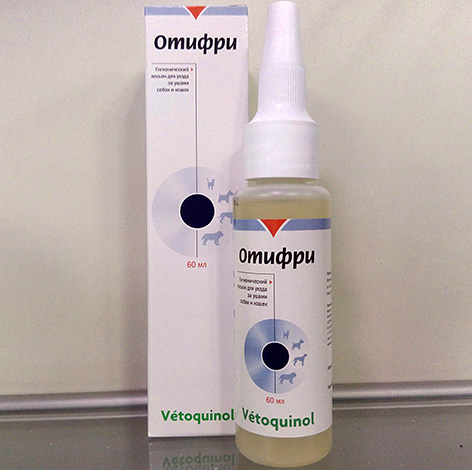
These fluids are poured directly into the ear. After that you can gently massage the auricle to increase the rate of softening of the secretions (if it causes pain in the animal, you should massage it very carefully).
On a note
Some people try to pour hydrogen peroxide into the pet's sore ear, knowing that it dilutes sulfur plugs well. But with strong inflammations for an animal, this can be very painful, therefore it is not recommended to do so.
After softening the masses that pollute the ears, they should be removed with a cotton swab or gauze.
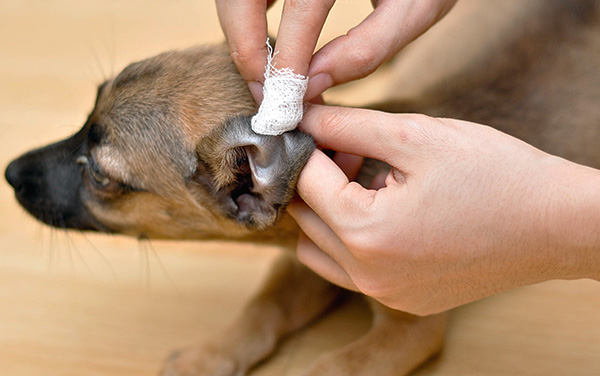
Then proceed directly to the drug treatment.As veterinary acaricides, pyrethroids and organophosphorous compounds in the form of ear drops and ointments (gels) are usually used.
However, it is important to take into account some of the nuances before using this or that tool:
- Drops from fleas and ticks Stronghold: these are drops from ixodic ticks (that is, from forest ticks), and not from ears, and they are buried on withers, and in no case in the ears. So when fighting with otodectes, only a weak preventive effect can be achieved. The same goes for the popular Frontline drops. Attempts to drip these drops into the ears are associated with the risk of causing significant harm to the pet's health (depending on the individual sensitivity);
- Ear drops Bars - a good option. It is important not to confuse this drug with drops on the withers leopard for fleas and ticks;
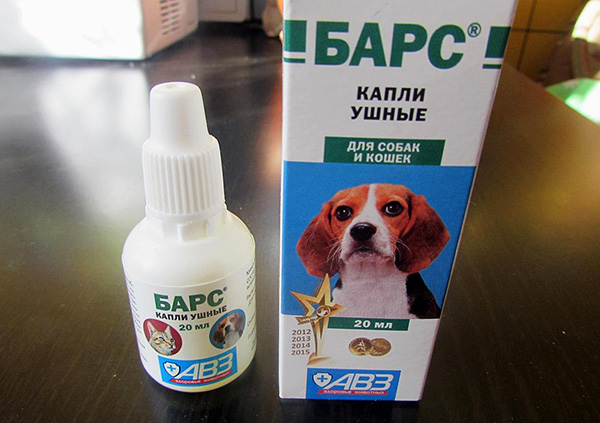
- Otoferonol Plus, Premium and Gold are good specialized drugs that help get rid of the ear tick;
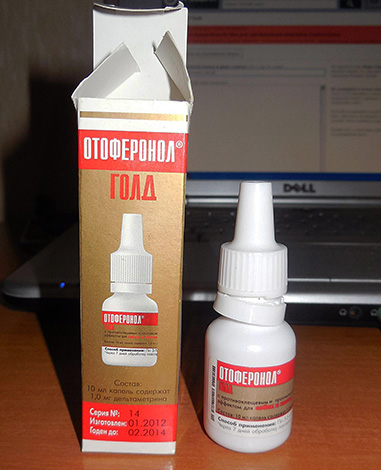
- Tsipam - ear drops based on cypermethrin and amitraz. Also a normal option;

- Decor-2 - perimethrin-based acaricidal drops for the treatment and prevention of otodectes. Acceptable option, however, it should be borne in mind that the concentration of permethrin in the composition is quite high (10%), and for cats, unlike dogs, this substance has a high toxicity;

- Amit-based amitraz ear drops are a normal option;
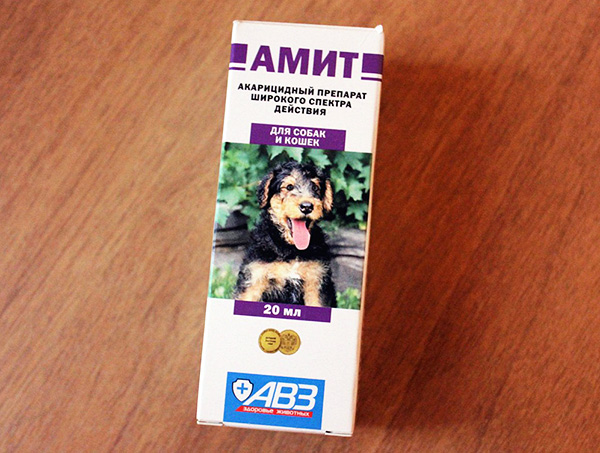
- Oritzin - ear drops based on lindane, which has a pronounced acaricidal effect. It may also be suitable for treatment (if there are no contraindications).
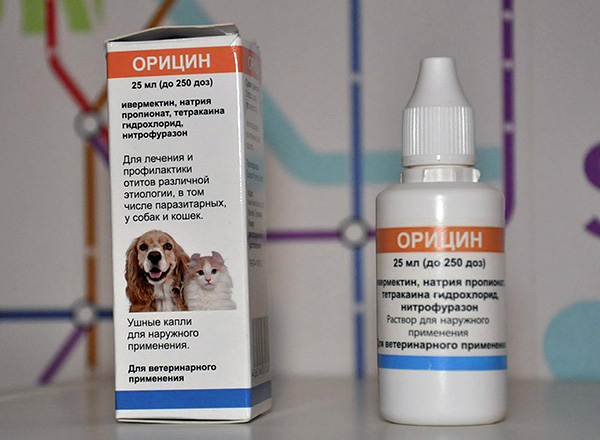
All the above drugs should be used strictly according to the instructions and only after consulting a veterinarian. The price is different for everyone, but this does not mean that a more expensive tool will be the most effective and safe.
On a note
Some reviews suggest that neocidol, cyodrin, etaphos, sumicidin or creoquine solutions can also help get rid of the ear mite. These preparations are very active: it is enough to add these funds to the pet's auricle twice to reliably get rid of ear parasites.
There is also evidence that neo-stomazan and butox solutions help to remove ear mites not badly - they are also introduced 2 times with a week break. But when treating with such drugs, it should be remembered that a pet may experience hypersensitivity to them, and then the drug can lead to strong allergic reactions.
In the framework of complex therapy, good results are achieved with the use of various ointments and gels, since they not only allow to destroy the ear mite,but also have analgesic and moisturizing effects.
For example, the popular means "Ivermek-gel" - has a pronounced acaricidal effect, and lidocaine, which is part of it, lowers the intensity of the itch after half an hour.

Unfortunately, the disease is often complicated by the accompanying microflora. In this case, it is usually necessary to use antibacterial drugs, and not just acaricides. In this case there are complex drugs: Demos, Dekta, Aurikan and others, possessing not only anti-tick, but also antimicrobial and anti-allergic components.
In any case, in order to achieve a good result in treatment, it is necessary to constantly consult with a specialist and strictly follow the instructions for the use of a drug. Do not treat at home or use traditional methods, because it can harm the health of your pet and slow recovery.
Preventive measures
Prevention of infection by otodectesis of humans and domestic animals consists mainly in preventing contact with sick animals, which, most often, are stray cats and dogs.If there are several pets in the house and one of them has become infected - do not even doubt that everyone will need treatment soon.

On a note
Although cases of human infection with otodectesis are rare, there is still no guarantee of complete safety from these parasites. It should be remembered about the negative impact of waste products of ear mites on human skin (allergic sensitization is possible).
Even if a person does not suffer from otodecosis, he may be a carrier of ear mites, so personal hygiene should be monitored as carefully as pet hygiene.
In addition to the treatment of diseased animals, a thorough disinfection must be carried out in the apartment and the cells - more precisely, the acaricidal treatment (this can be done either independently or go to the disinsection service, which is now a lot in any large city).

In addition, ticks quickly die from direct sunlight and insufficient humidity, so it is recommended to air the apartment regularly and, if necessary, “fry” furniture in the sun.
Negative effects on parasites and hot water, so the linen, bedding and various fabrics with which the sick animal came into contact, it is desirable to boil.The cells are treated with acaricidal preparations (generally speaking, for this purpose you can use almost any insecticidal agent, including aerosols Dichlorvos, Raptor, Raid, or concentrates for dilution and spraying in the form of Get spray, Hangman, Xsulat Micro, etc.). In the apartment, in addition to cleaning upholstered furniture, you need to carry out a general cleaning: thoroughly wash all surfaces with detergent.
If you have a personal experience of treating an animal for ear ticks, be sure to leave your review at the bottom of this page. Whether you were able to cope with the problem, what means were used, whether you managed to quickly achieve the desired result - readers will be interested in any information.
A good example of otodecosis in humans
Interesting video: moving ear mites in the ear canal of a cat at high magnification

